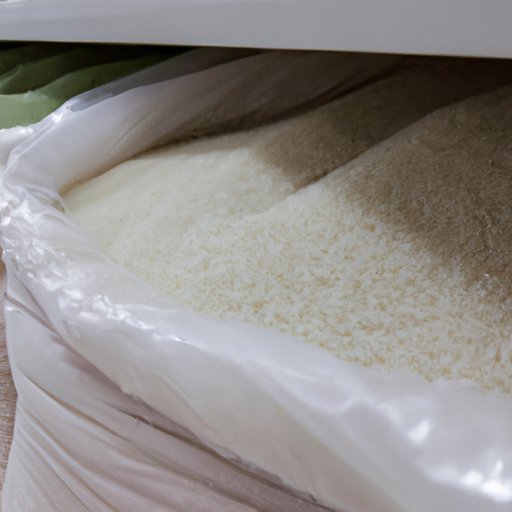Introduction
If there’s one staple food that every household keeps stocked, it’s rice. This versatile grain is a valuable addition to any meal and can be cooked in a variety of ways. But how long can you keep rice stored? Proper storage is crucial to keep rice fresh and prevent spoilage, and that’s what we’ll be discussing in this article.
The Shelf Life of Rice: How Long Can You Keep It Stored?
The shelf life of rice can vary depending on the type and how well it’s stored. White rice, for example, can last up to five years if stored properly, while brown rice typically lasts up to six months. Wild rice, on the other hand, can last up to a year.
The key to maximizing the shelf life of rice is to keep it dry and store it in a cool place. Moisture and heat can lead to spoilage, so avoid storing rice in areas where it may be exposed to these elements. Make sure to use airtight containers or bags to prevent moisture from seeping in.
Is Your Rice Still Safe to Eat? Signs of Spoilage and Expiration Dates
So how can you tell if your rice has gone bad? Signs of spoilage include mold, discoloration, off-smells, or infestations from insects or rodents. If you notice any of these signs, it’s best to discard the rice, as it may not be safe to eat.
Expiration dates on rice packaging can be a helpful guide, but they aren’t always reliable. It’s best to do a visual and olfactory inspection to check if the rice is still good to eat.
Tips for Storing Rice Long-Term – How to Ensure It Stays Fresh
If you plan to store rice for an extended period, there are a few tips to keep it fresh. Using airtight containers, vacuum-sealed bags, or resealable freezer bags can all help keep rice dry and free from moisture and humidity.
Another essential tip is to store rice in portions. Storing large batches can make it difficult to ensure the rice stays fresh. Portioning rice also makes it easier to take what you need and avoid needing to thaw or cook a large amount all at once.
Waste Not: Creative Ideas for Using Old Rice
Don’t throw away old rice that may no longer be suitable for cooking. Instead, consider repurposing it. Rice can be used as compost and fertilizer in your garden or to make rice heating pads. You can also use it for art projects like rice mosaics or building mini terrariums. The possibilities are endless!
The Benefits of Buying Rice in Bulk – How to Save Money and Reduce Food Waste
Buying rice in bulk can save both money and reduce food waste. Larger quantities usually come with a cheaper price tag per pound, and buying in bulk means you won’t have to make as many trips to the grocery store. To ensure bulk rice stays fresh, store it in a cool and dry place, away from moisture and humidity. Airtight containers or bags can help maintain freshness.
Conclusion
Storing rice properly is essential for maximizing its shelf life and preventing spoilage. Remember to keep rice dry and store it in cool places, away from heat and moisture. If you notice any signs of spoilage, discard the rice, and consider repurposing it rather than letting it go to waste. Buying rice in bulk can also be an economic and eco-friendly option, but make sure to store it correctly to ensure freshness for as long as possible.
(Note: Is this article not meeting your expectations? Do you have knowledge or insights to share? Unlock new opportunities and expand your reach by joining our authors team. Click Registration to join us and share your expertise with our readers.)
